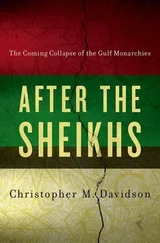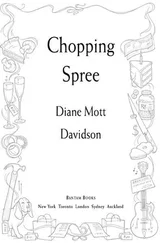The Bodleian — affectionately known as the Bod — comprises a network of thirty libraries linked by underground tunnels. It is stuffed with literary treasures — ranging from four original manuscripts of the Magna Carta and a copy of the Gutenburg Bible to the handwritten manuscript of The Wind in the Willows and the entire archive of Alan Bennett. And of course there’s a copy of every book published in the UK, as well as printed material like the Yellow Pages, instruction manuals and every newspaper. The library is simply bursting at the seams, with an eye-popping 6 million books stored on 117 miles of shelving. It’s a far cry from Oxford’s first library, founded in 1320, a small first-floor room with a collection of chained books that could fit inside a single chest. The collection grew steadily, and in 1488 the Duke Humphrey’s Library was built to house the gift of manuscripts from the Duke of Gloucester. The new library was plundered during the Reformation, when, according to the antiquarian Anthony Wood, ‘some of those books so taken out by the Reformers were burnt, some sold away for Robin Hood’s pennyworths, either to Booksellers, or to Glovers to press their gloves, or Taylors to make measures, or to Bookbinders to cover books bound by them’. By the end of the sixteenth century the university had barely a library at all. All the furniture had been sold and only three of Duke Humphrey’s original books remained in the collection.
Enter Sir Thomas Bodley, a diplomat in the service of Queen Elizabeth I, who decided on his retirement to ‘set up my Staffe at the Librarie dore in Oxon’. He poured money into refurbishing the library, which reopened in 1602 as ‘Bodley’s Library’. It’s jokingly said the library was founded on pilchards, as Sir Thomas’ wife was the widow of a wealthy fish merchant. Sir Thomas set about restocking the new library, donating some of the books himself and encouraging friends, amongst them Sir Walter Raleigh, to do likewise. Bodley didn’t want any books in English at first — he called them ‘baggage books’ and ‘riff raff’ — but soon realized that books were increasingly being printed in English rather than in Latin. And so in 1610 he made an historic agreement with the Stationers’ Company in London to put a copy of every book registered with them in the library. The arrangement set the Bodley on a road of continuous expansion and formed the basis for copyright libraries across the world. Today the Bodleian is one of six copyright libraries — or legal deposit libraries as they’re now called — in the British Isles, entitled by law to receive a free copy of every book published in the UK. (The other five are the British Library, Cambridge University Library, the National Libraries of Scotland and of Wales and the Library of Trinity College Dublin.)
One of the early fruits of the deposit arrangement was the acquisition of Shakespeare’s First Folio. ( Folio is a printer’s term for a sheet of paper folded in half to make two leaves or four pages of a book or manuscript.) It was sent by the Stationers’ Company to Oxford in 1623, bound by William Wildgoose, a local stationer, and chained to a shelf in the Bodleian. At some point in the 1660s it was sold and replaced by the Third Folio, the librarian presumably assuming the First Folio to be out of date. He didn’t anticipate it becoming one of the most valuable printed books in the world. A copy sold for £3.73 million at Christie’s in New York in 2001. The First Folio was lost to the library for 240 years. When it finally resurfaced as part of a family heirloom in 1905, the Bodleian had to launch a public appeal to raise the hefty asking price of £3,000. It was the largest sum it had ever paid for a book — the previous record payment fifteen years before was £221 and 10 shillings for a volume of Anglo-Saxon charters. Part of the First Folio’s appeal is surely the wear and tear of the pages, proof that in the mid 1600s, Shakespeare’s Romeo and Juliet was clearly the favourite of students.
As the Bodleian became home to a growing number of valuable tomes and manuscripts, the oath ‘not to remove from the Library … any volume’ was vigorously enforced. No one has ever been allowed to take a book from the Bod; it has to be read on the premises or not at all. Even Charles I, who had made Oxford the royalist capital during the Civil War, was refused when he tried to borrow a volume. Cromwell too.
Like Alice, the Bodleian’s book collection grew and grew and grew — as did the number of buildings needed to house them. Today books are arriving at the rate of 1,000 a day. It’s a storage nightmare.
The New Bodleian building was built in 1939. Ian Fleming kept his personal library here during the war and donated the manuscript of Chitty Chitty Bang Bang as a thank you. This building alone has 95 kilometres of books. There’s another two and a half million books sitting in humidity-free darkness in a salt mine in Cheshire.
The problem of where to keep the majority of the least-read books is being met with the opening at the end of 2010 of a huge storage facility in Swindon, 25 miles outside Oxford. The removal of 6 million books and more than 1.2 million maps is well underway. All the books in high demand will stay in Oxford as well as all the Bodleian’s literary treasures.
Among these treasures is the Abingdon Missal , created for the abbey of Abingdon in 1461. It’s handwritten in tiny, Gothic script and illuminated on vellum. You can even see the lines the scribes ruled to keep their writing straight. This missal was one of the last hurrahs of labour-intensive, handwritten manuscripts. It was produced at almost exactly the same time that Gutenberg was printing his Bible and sounding the death knell of the copiers, although it took some years for print to be completely established.
Then there is The First Book of the Natural History by Pliny the Elder, translated into the Florentine language for the King of Naples, a heavily bound manuscript from 1476, the same year as the printing press arrived in England. It is utterly beautiful, the most spectacular surviving copy of the work, with a binding made from green goatskin studded with silver ornaments. It’s an example of a crossover between new and old technologies: it’s printed in a very modern font (Times Roman, the inspiration for the Times New Roman typeface in the 1930s) and is in vernacular Italian rather than Latin, but it uses vellum and hand illumination to make it look like the traditional manuscripts.
Some would say that world is coming to an end, and a new digital age is replacing it. Books and academic papers and maps and newspapers are now being produced electronically, and the Bodleian has a duty to preserve them all. Today racks of computer servers sit alongside the bookshelves, saving and archiving millions of gigabytes of information. It’s a daunting task, but Richard Ovenden, the library’s associate director and keeper of special collections, insists that good librarianship is all about ensuring that information from the present can be accessed by those in the future.
‘We have staff whose job it is to keep stuff safe so that scholars in 400 years’ time will be able to access the information that’s being produced now, just as we’re able to access the information printed by a great scholar … The University of Oxford has been keeping records since the late twelfth century, so it’s almost genetically in our system that we need to keep this information over a long term.’
The Bodleian looks after the private papers of seven former prime ministers, which historians can pore over. The archiving of historical material will continue, says Richard, but in different ways.
‘The politicians of today and tomorrow are communicating with their friends not by writing letters like Disraeli did, thousands and thousands of them, but by sending emails. They’re communicating with their constituents not by publishing little pamphlets but by blogging and tweeting and putting web pages up. And as we’re one of the great repositories of twentieth- and twenty-first-century politics, we’re having to develop our own digital infrastructure to capture that information, keep it safe, manage it and make it accessible to researchers.’
Читать дальше












